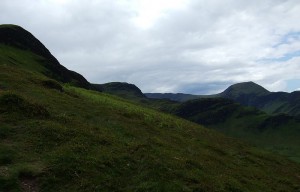 The Lake District, located in North West England, has mountains and lakes that span a wide area of close to 850 square miles. The land is varied enough to make it good for hiking as well as leisurely strolls in the country. There are mountain peaks that extend 979m for great climbing and other lower peaks that consist of vast moorland that is great for just a calm walk.
The Lake District, located in North West England, has mountains and lakes that span a wide area of close to 850 square miles. The land is varied enough to make it good for hiking as well as leisurely strolls in the country. There are mountain peaks that extend 979m for great climbing and other lower peaks that consist of vast moorland that is great for just a calm walk.
Geologists are also interested in the area because of Barrowdale Volcanic rocks and Skiddaw Slate that dates back over 500 million years. The features in the area came about during the glaciation where a U-shaped ice covered valley in the earth. This area is great for holidays that are for walking in the UK where you are able to explore this ancient place.
The dampest part of the UK is where the Lake District is located, with mid-summer temperatures reaching15C during the day with this being ideal for hiking in the UK. You do not need extra jackets nor will you stress from exercising in high heat.
The area in and around Lake District National Park is home to loads of wildlife and there are a number of protected animals with many species that are indigenous to the area. A walking holiday gives you the chance to see the wildlife not see anywhere else.

There are pathways along the lake to walk on and you can stop to see red squirrels as they scamper by. The only pair of golden eagles in England is found here, and maybe you will be lucky enough to get to see one.
For the botanists in the group there are two extraordinary flowers here, the Butterwort and Sundew flowers that native to England. The plants eat insects by luring them and trapping them which gives them the majority of their nutrition.
Below the waters in the lake there are many interesting things as well with at least three endangered fish species in the lakes. The Vendace is in the waters of Derwent and Bassenthwaite; the Artic Charr is in Coniston Water, Buttermere and Ennerdale and the Schnelly is in Red Tarn, Haweswater, Brothes and Ullswater.
The famous author of children’s books, Beatrix Potter, lived in Hill Top Farm where she received inspirations for a number of her stories of the area. Look out for Peter Rabbit you may just see him bobbing through the undergrowth.









